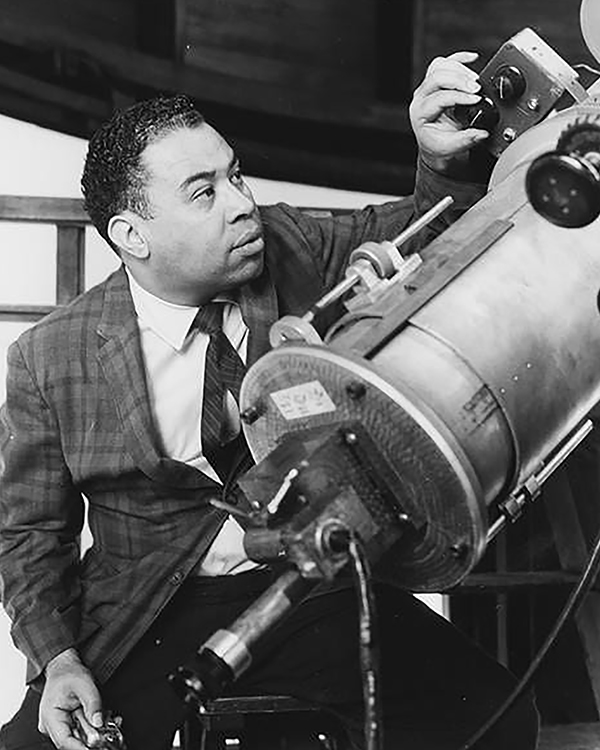( March 4, 1922 – November 30, 2010 ) was born in St. Joseph, MO. He was the oldest of seven brothers! Peery enlisted in the army in 1942, and served in campaigns in North Africa and Italy. After his discharge in 1945, he enrolled in the University of Minnesota, earning a BS in Physics in 1949. His intention to pursue aeronautical engineering changed to physics, but after receiving a MS in physics in 1955, he decided on a career in astronomy. He told editors of the PBS series The Astronomers (1991, on which his career is highlighted) he thought it was shamefully absurd not to know what made the stars shine. So he began Ph.D. studies in astronomy at the University of Michigan. His dissertation was on the complex eclipsing binary V V Cephei, where a compact hot star passes behind a cool giant star, revealing the structure of that giant’s atmosphere. This task was especially demanding, so because of his physics background he was able to design and construct one of the first oscilloscope measuring engines, which his fellow students called the PeeryScope. The final dissertation is an impressive combination of observational and astrophysical analysis. His degree was obtained in 1962. He had already begun a career at the University of Indiana, where he taught and did research (1959-1976). The Indiana years were very productive. He was a true scholar.
His interests remained on cool giant stars, like V V Cephei, but moved to the study of systems where radio active element technetium could be identified in the spectrum. This observation proved that nuclear transformations involving trans- iron peak elements were taking place in stars, and was the keystone of the theory of nucleosynthesis. Nucleosynthesis and stellar structure were the main fields of his research career.
In 1977, Peery joined the faculty of Howard University. His efforts there were on teaching and to bring more African Americans into scientific careers. Benjamin was only the second African American Ph.D. in astronomy and wanted to increase that number and educational opportunities.
At Howard, he was the principal investigator on a NASA grant which led to the development of research and teaching facilities for astronomy. He supported students with this grant. He retired from Howard in 1992.
Peery served on the Astronomy Advisory Panel of the NSF, was a member of the American Astronomical Society’s Committee on Manpower and Employment, was a AAS visiting Professor, a US representative to the International Astronomical Union, and a visiting professor at Harvard University and California Institute of Technology. He was a member of the AAS, the AAAS, the IAU, ASP, and served as a trustee of the Adler Planetarium in Chicago.

